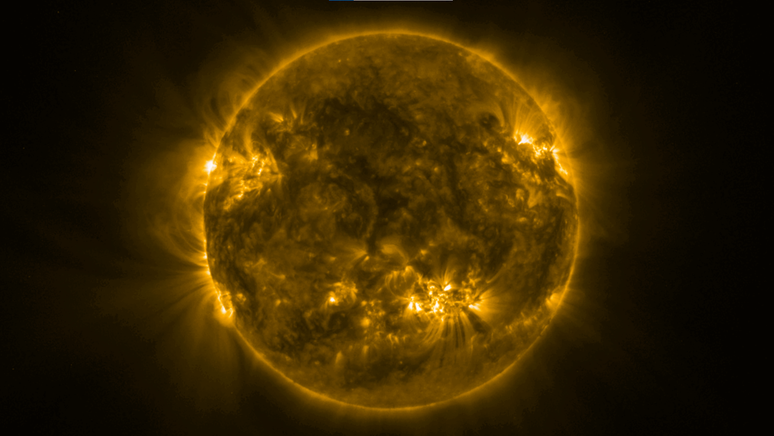The AR 3664 region on the Sun, responsible for May’s extreme geomagnetic storm, remained active and released the strongest outburst seen since 1996
The Solar Orbiter probe, of the European Space Agency (ESA) e NASAcaptured May 20 at solar flare stronger than the current cycle of the Sun. The phenomenon originated sunspot AR366 which, restless, launched its explosion of classification X 12, i.e. of maximum intensity.
- The solar storm is coming to an end; find out why it was so intense
- The extreme solar storm is over. When will the next one be?
“This makes it the strongest explosion in the world. solar cycle current, and one of the strongest since 1996,” noted ESA researcher Laura Hayes. It is worth remembering that the sunspot AR 3664 It was also responsible for the largest solar storm in 20 years, which occurred in May.
The new particle explosion was recorded by Solar Orbiter thanks to its prime location to study the Sun. While most missions observe the side of our star facing Earth, Solar Orbiter is currently studying the side away from the Sun (i.e. that which is in front of our planet).
After the eruption on May 20, one of the Solar Orbiter’s instruments detected a real wave of ions traveling at tens of thousands of kilometers per second, while the electrons moved at a speed speed close to that of light. At the same time, the on-board computers of the BepiColombo and Mars Express probes reported a series of memory errors.
The reason? Well, the most likely explanation is that the solar particles hit the memory cells inside the spacecraft. “This engineering data is intended to monitor the health of spacecraft, but this shows that it can also be used to detect space weather events, something we hadn’t really anticipated!”, commented Olivier Witasse, Mars Express project scientist.
Shortly thereafter, the Solar Orbiter’s coronagraph caught the Sun launching a coronal mass ejection, the particles of which reached the spacecraft about a day later. The plasma bubble was so large that it was even spotted by the SOHO mission, which at the time was on the side of the Earth opposite the Sun.
Together, these detections show that sunspot Ar 3664 was still very much awake, so much so that it kicked into action again on May 27. “If this explosion and coronal mass ejection had been directed towards Earth, this would definitely have caused another major geomagnetic storm. But even so, the result was a severe radio blackout in North America,” noted Solar Orbiter project scientist Daniel Müller.
The animation below shows how particles from the explosion on the 20th spread throughout the Solar System:
On June 11, Solar Orbiter detected a new explosion in AR 3664. By monitoring activity in active regions on the Sun like this one, scientists can find ways to predict such phenomena more accurately, while also determining the effects that can occur on our planet after similar events.
Source: ESA
Trends on Canaltech:
- The Sun will undergo a magnetic reversal. What will happen to Earth?
- ⌚️ GOOD AND CHEAP | Galaxy Watch 6 reaches unmissable price with coupon
- Mysterious sea pig found 2.8 km deep in Chile
- Scientists say using wireless headphones poses cancer risk
- AstraZeneca “admits” a rare side effect of the Covid-19 vaccine
- The winter solstice will begin earlier than in recent centuries
Source: Terra
Rose James is a Gossipify movie and series reviewer known for her in-depth analysis and unique perspective on the latest releases. With a background in film studies, she provides engaging and informative reviews, and keeps readers up to date with industry trends and emerging talents.







